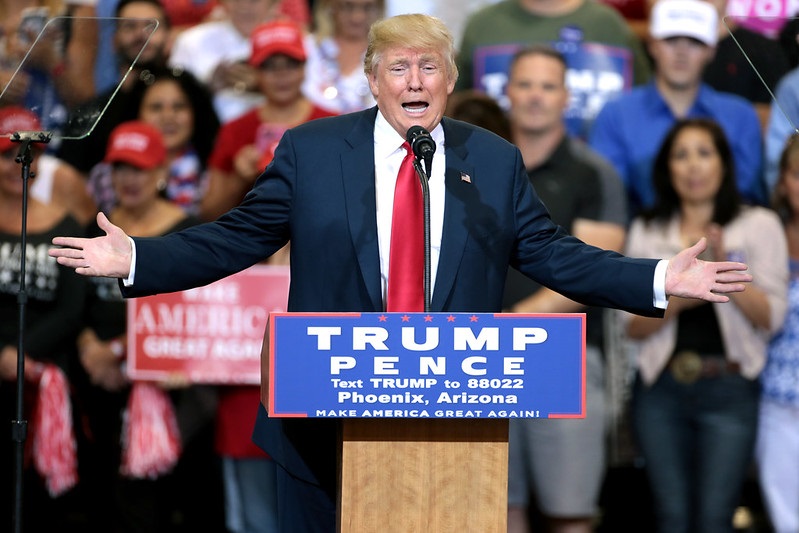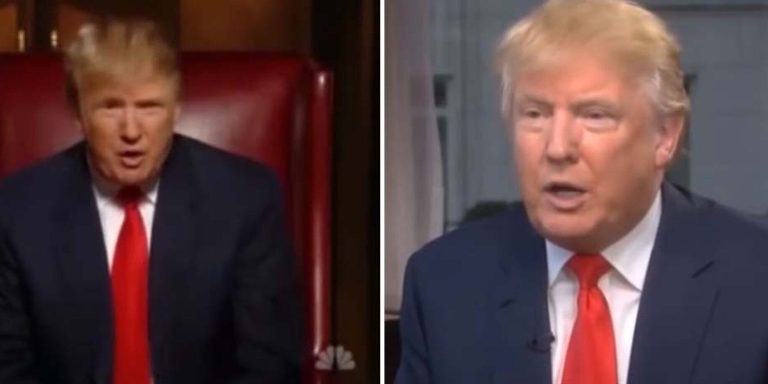

How Trump Changed the Republican Party Forever: A Seismic Shift
The reverberations of Donald Trump’s presidency continue to shake the Republican Party to its core. His four years in office weren’t just a change in leadership; they were a fundamental realignment, a tectonic shift in the party’s ideology, rhetoric, and electoral strategy. Was it a revolution, a reformation, or a mere aberration? The answer, like the man himself, is complex and multifaceted.
Before Trump, the Republican Party, despite its internal factions, largely adhered to a recognizable platform: fiscal conservatism, a strong national defense, and a more traditional approach to social issues. While internal debates existed, the party maintained a certain level of ideological coherence, at least in public. Trump shattered this paradigm.
The Rise of Populism and the Erosion of Traditional Conservatism:
Trump’s campaign, built on populist anger and resentment, directly challenged the established Republican order. He eschewed traditional conservative talking points on issues like free trade, interventionist foreign policy, and even the sanctity of democratic institutions. His rhetoric, often characterized by its bluntness and disregard for political correctness, resonated with a segment of the electorate deeply dissatisfied with the status quo. This populist wave swept away many long-standing Republican figures and strategies, replacing them with a new breed of politicians prioritizing loyalty to Trump above all else.
| Before Trump | After Trump |
|---|---|
| Emphasis on free trade agreements | “America First” trade protectionism |
| Measured foreign policy | Unilateralist and unpredictable foreign policy |
| Respect for democratic norms | Questioning of election integrity and democratic processes |
| Traditional conservative social stances | More fluid and opportunistic stances on social issues |
The Trumpian Rebranding: From Elephant to… What?
The Republican Party under Trump underwent a significant rebranding. The party’s traditional image of fiscal responsibility and measured governance was replaced by a more nationalist and populist identity. This new identity wasn’t just about policy; it was about a style of politics that prioritized loyalty, personality, and direct engagement with voters, often bypassing traditional media outlets. The party’s messaging became increasingly confrontational, fueled by a constant stream of attacks on the “deep state,” the media, and the Democratic Party.
The Impact on the Electoral Landscape:
Trump’s impact on the electoral landscape is undeniable. His appeal to previously disengaged or overlooked segments of the electorate expanded the Republican base, particularly in working-class and rural communities. However, this expansion came at a cost. His confrontational style and divisive rhetoric alienated many moderate Republicans and independent voters, leading to significant losses in some key demographics.
The 2020 election, while narrowly lost, demonstrated the power and the limitations of the Trumpian approach. While Trump increased Republican voter turnout, he also failed to attract a broader coalition of voters necessary to win a national election. The subsequent January 6th Capitol attack further underscored the fragility of the democratic norms within the party, raising concerns about the long-term consequences of the Trumpian revolution.
The Future of the Republican Party:
The question of the Republican Party’s future remains open. While Trump’s influence continues to be significant, the party is grappling with a complex internal struggle. A segment of the party continues to embrace Trumpism wholeheartedly, while others are seeking a path towards a more traditional conservative platform. The battle for the soul of the Republican Party is far from over. Will the party return to its pre-Trump roots, or will it continue down a path shaped by populism and personality-driven politics? The answers will shape not only the Republican Party but also the future of American politics for years to come. The era of Trump has undeniably left an indelible mark, irrevocably changing the landscape of the Grand Old Party, leaving its future trajectory shrouded in uncertainty.

Additional Information
The Trump Transformation of the Republican Party: A Deeper Dive
Donald Trump’s presidency irrevocably altered the Republican Party’s ideological landscape, organizational structure, and electoral strategy. While the long-term consequences are still unfolding, a detailed analysis reveals profound and multifaceted changes that extend beyond simple pronouncements of a “populist takeover.”
I. Ideological Shift: From Conservatism to Trumpism:
The traditional Republican platform, emphasizing fiscal conservatism, limited government, and a strong national defense, underwent a significant metamorphosis under Trump. While fiscal conservatism remained a rhetorical touchstone for some, Trump’s actions, including significant increases in the national debt, demonstrated a willingness to prioritize other goals. His “America First” approach prioritized protectionism and nationalism over free trade, a core tenet of traditional Republican economics. Socially, while maintaining a pro-life stance, Trump’s emphasis on cultural grievances and his appeal to a base energized by anti-establishment sentiment shifted the focus away from traditional social conservatism. This resulted in a blurring of lines between fiscal and social conservatism, creating what is often termed “Trumpism” – a distinct ideology prioritizing loyalty to Trump himself over traditional conservative principles.
Case Study: The 2016 Republican Primary: Trump’s victory in the 2016 primaries was a stark demonstration of this shift. He defeated 16 other candidates, many of whom held established conservative credentials, by appealing to a segment of the Republican electorate frustrated with the party establishment and its perceived failures to address their economic and cultural anxieties. This demonstrated the power of populist rhetoric and the weakening of traditional ideological gatekeepers within the party.
II. Organizational Restructuring: The Rise of the Trump Loyalist Base:
Trump’s presidency fostered an intensely loyal base within the Republican Party, profoundly impacting its internal dynamics. This base, characterized by unwavering support for Trump regardless of his actions or statements, exerts significant influence on candidate selection, policy decisions, and party messaging. This loyalty has resulted in the purging of perceived “RINOs” (Republicans In Name Only) and the elevation of individuals demonstrating unquestioning allegiance to Trump.
Example: The January 6th Capitol riot and its aftermath showcased the power of this loyalist base and the willingness of some Republican officials to downplay or excuse Trump’s role in inciting the violence. This illustrates a significant shift in the party’s tolerance for dissent and its willingness to prioritize loyalty to a single individual over institutional norms and democratic processes.
III. Electoral Strategy: Populism and the Mobilization of a Disaffected Electorate:
Trump’s electoral success demonstrated the power of populist appeals to a broad spectrum of voters, including those traditionally outside the Republican base. His use of social media, direct communication with voters, and focus on issues resonating with working-class and rural communities effectively bypassed traditional media and party structures.
Statistical Evidence: While Trump’s popular vote totals were lower than some previous Republican candidates, his success in key swing states demonstrates his ability to mobilize previously untapped segments of the electorate. This shift in electoral strategy has implications for future Republican candidates, who are likely to emulate Trump’s populist tactics and focus on mobilizing a base energized by cultural grievances and anti-establishment sentiment.
IV. Long-Term Consequences: Fractured Party or a New Era?
The long-term impact of Trump’s influence on the Republican Party remains uncertain. While the party is now seemingly divided between Trump loyalists and those seeking a return to more traditional conservative principles, the continued influence of the Trumpist base suggests a significant shift away from the party’s pre-Trump identity. The future of the Republican Party will likely depend on the ability of its leadership to navigate this internal struggle and define its identity in the post-Trump era. This includes resolving the tension between traditional conservative principles and the populist elements that Trump successfully mobilized.
This analysis highlights that Trump’s impact extends far beyond a simple change in leadership. It represents a fundamental transformation of the Republican Party’s ideology, internal structure, and electoral strategy, with profound and potentially lasting consequences for American politics. Further research is needed to fully understand the long-term implications of these changes and how the Republican Party will adapt and evolve in the coming years.







